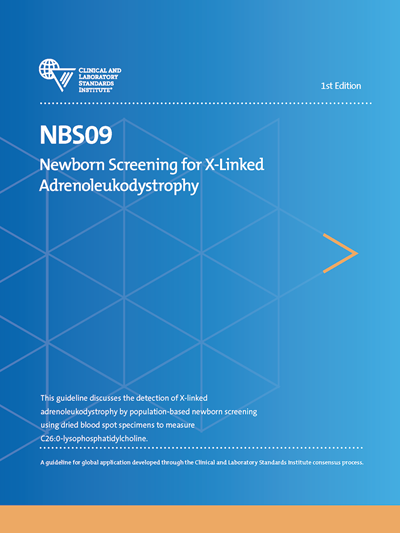CLSI NBS09
Newborn Screening for X-Linked Adrenoleukodystrophy, 1st Edition
This guideline discusses the detection of X-linked adrenoleukodystrophy by population-based newborn screening using dried blood spot specimens to measure C26:0-lysophosphatidylcholine.
This edition of the document was corrected in September 2021. Read the full correction notice here, and learn more about our corrections process here.
Member price:
List Price:Details
Chairholder: Joseph Orsini, PhD
Date of Publication: August 6, 2021
Order Code PDF: CLSI NBS09Ed1E
ISBN Number: 978-1-68440-113-0
Order Code Print: CLSI NBS09Ed1
ISBN Number: 978-1-68440-112-3
Edition: First
Pages: 100

